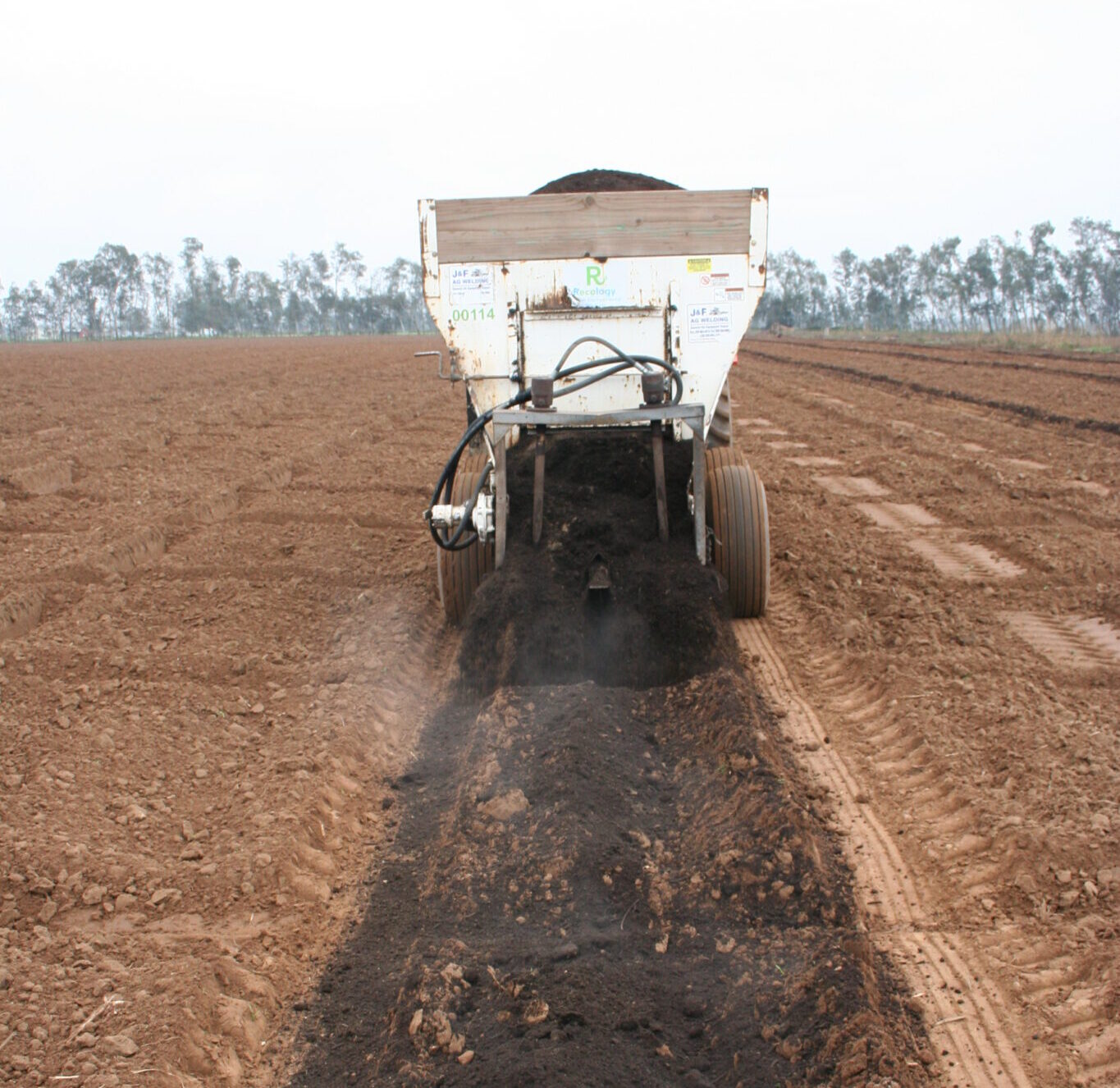
Although many trials have examined compost’s contribution to soil health, improving soil water-holding ability and enhancing soil microbes, few have looked at whether the amendments enhance crop production and a grower’s bottom line.
“The reason I did [the trials] was in response to questions I’d get from growers asking, ‘Should I be doing this or should I be implementing this in my program?’” said Roger Duncan, UCCE farm advisor in Stanislaus County. “’And if so, how much compost should I be putting on?’ I really couldn’t give good answers.
“I’d done some short-term trials in the past looking to see if we could correct some specific problems, including the use of compost as an alternative to fumigation because there was a real push to not fumigate and instead use compost and add a bunch of microbial products. I didn’t see any changes in tree performance of any kind with the use of compost and these products.”
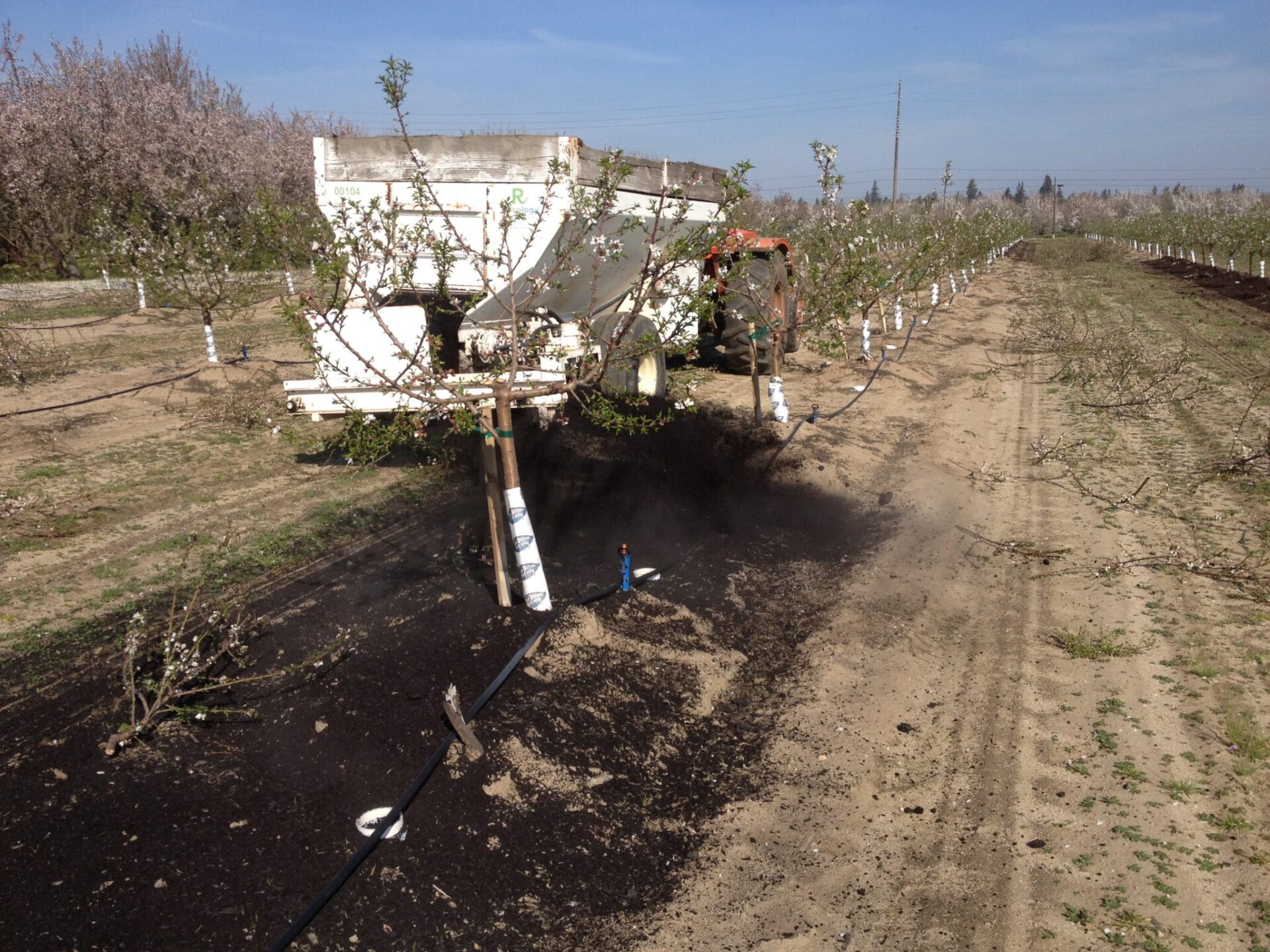
His two more recent trials were longer term, and both began even before three Stanislaus County almond orchards were planted. One examined whether various rates of composted green waste aided orchard establishment by enhancing young tree growth. The other compared annual composted green waste or composted manure applications on crop yields and associated grower profits.
“Surprisingly, most studies that have been done with compost really haven’t looked at plant performance,” Duncan said. “They tended to focus on key components of soil health, like organic matter, cation exchange capacity, and microbial diversity and activity. Those are all important things, but that’s not really the bottom line for a grower.”
Paul Lum, a Vacaville-area almond grower who works for the American Farmland Trust/ California Region as an agricultural specialist, has written case studies on several growers who have used compost in conjunction with cover crops or conservation cover.
Although those growers swear by compost’s beneficial effects on soil health, Lum said results are inconclusive on the amendment’s contribution to nut yields.
“The jury is still out as far as economic benefits,” Lum said. “There’s nothing conclusive, but the farmers we’ve interviewed tell us they believe nutrient availability has improved. As a result, the growers reduced nitrogen and potassium applications and lowered their costs. That’s a plus,” he said. “Although, the Almond Board and UC advisors believe there’s no real conclusive evidence of seeing significant yield bumps, it’s important to remember this research is ongoing.”
Many growers told Lum about the long-term benefits they see.
“It can be expensive, and you have to time it properly,” he said. “The farmers who apply it have adopted the approach that this practice is improving their soil and it improves their long-term sustainability. It’s good for the environment, and it’s a way of capturing carbon to reduce greenhouse gas emissions and help mitigate climate-related natural disasters such as wildfires.”
As an almond grower himself, Lum said he also understands and respects other points of view.
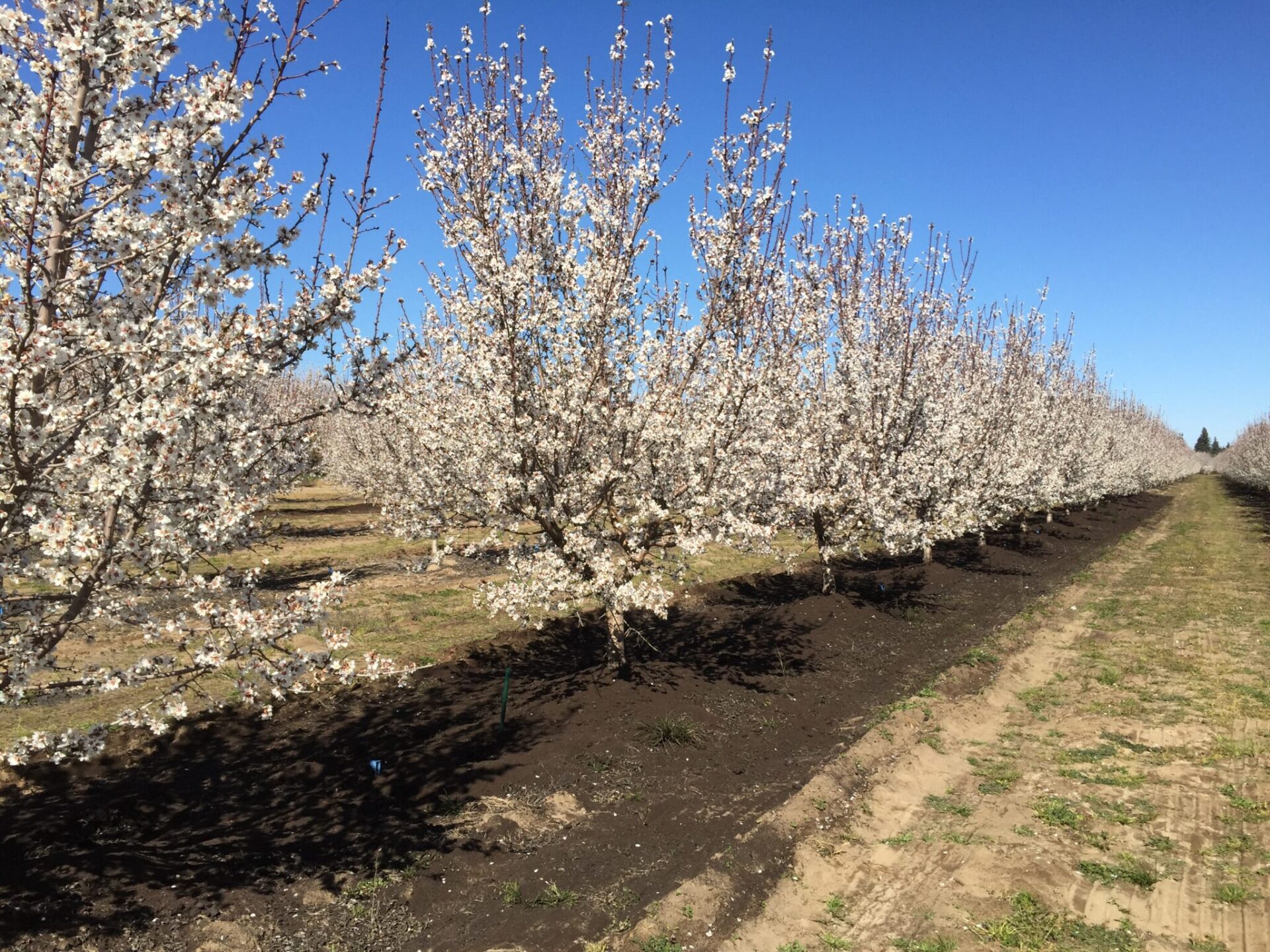
Compost Only at Planting
In the first trial, Duncan worked with a local nursery to determine whether applying composted green waste prior to planting was beneficial. The trial also examined different rates.
The orchard site, which was a sandy loam soil, had previously been a vineyard. The vines were removed, and the soil fumigated.
Prior to planting, composted green waste was applied in a concentrated four-foot-wide band down the future tree rows. The rates were 0, 5, 10, 20 or 30 tons per acre. The compost was then incorporated into the soil, and the potted trees were planted in May 2017. The cooperating grower fertilized the orchard as he would normally do.
Duncan monitored the trees for two years, recording tree growth, leaf nutrients and stem water potential using a pressure bomb to monitor water stress.
None of the treatments showed a statistically significant difference from the untreated check. Even the 30 ton per-acre rate, at a cost of about $800 per acre, had no effect on tree establishment or growth, leaf nutrient content or tree water status, he said.
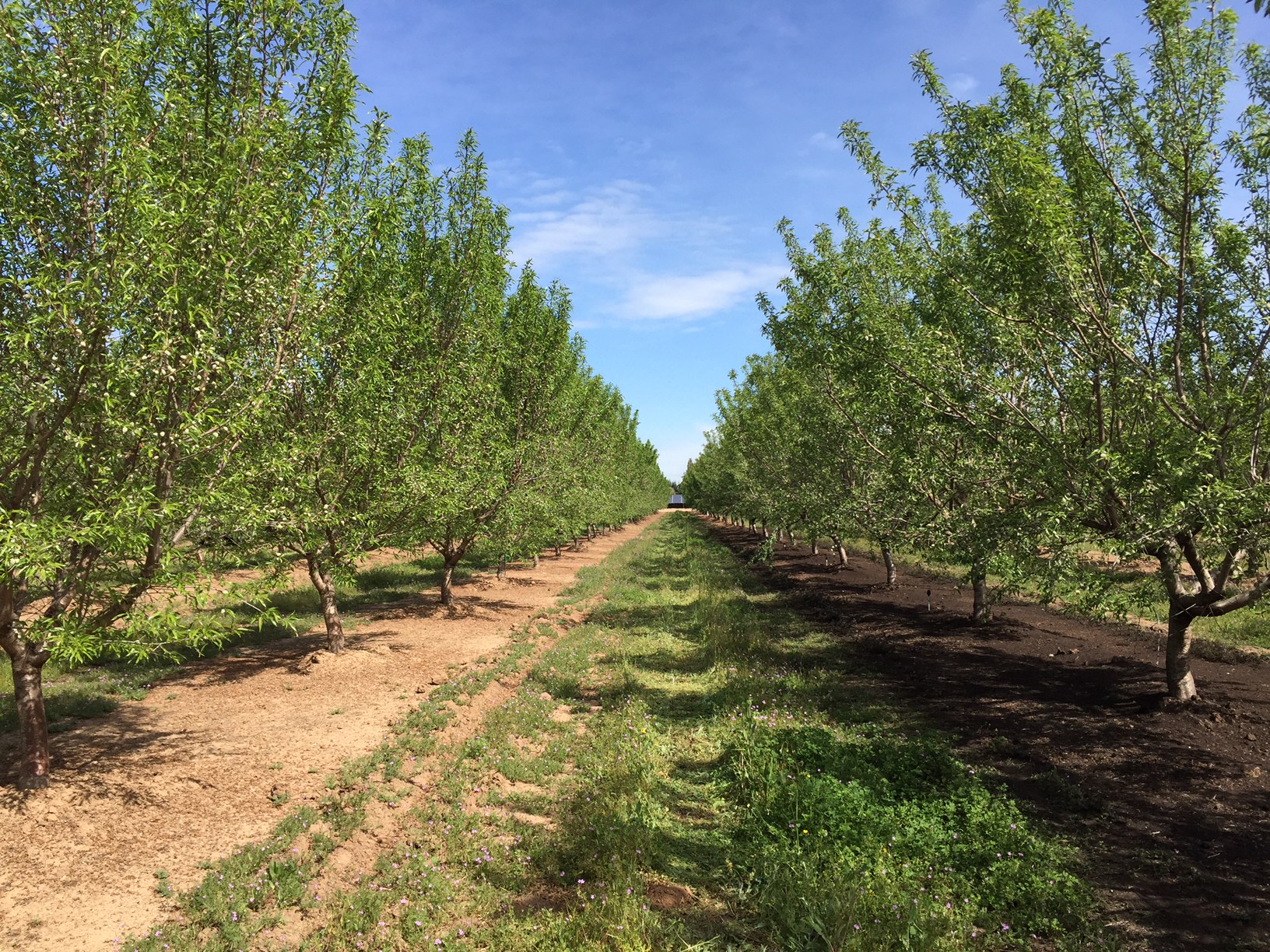
Compost at Planting, Then Annually Applied
The second trial involved two orchards on different soils and under different situations.
One near Riverbank was planted on Hanford sandy loam soil and had never been in orchard crops before. The test variety was Nonpareil on Nemaguard rootstock with full-coverage sprinklers.
The other, on very sandy soil north of Modesto, was a replant situation. The soil had been fumigated after the original almond trees were removed the previous fall. Planted to the variety Independence on Nemaguard rootstock, it was irrigated with microsprinklers.
In both locations, 5.2 tons of compost per acre were applied in a concentrated band about four feet wide prior to planting and incorporated into the soil.
Bareroot trees were then planted, and an additional 0.5 tons per acre of compost was applied to the base of the new trees after one month of growth.
Each of the next four springs, about 10 tons of composted green waste or composted manure was applied to the soil surface in a concentrated band about 8 feet wide.
Trees were periodically monitored for stem water potential – a determination of water stress – and annually for leaf nutrients, nematodes, growth and yield.
Trees were periodically monitored for stem water potential and annually for leaf nutrients, nematodes, growth and yield.
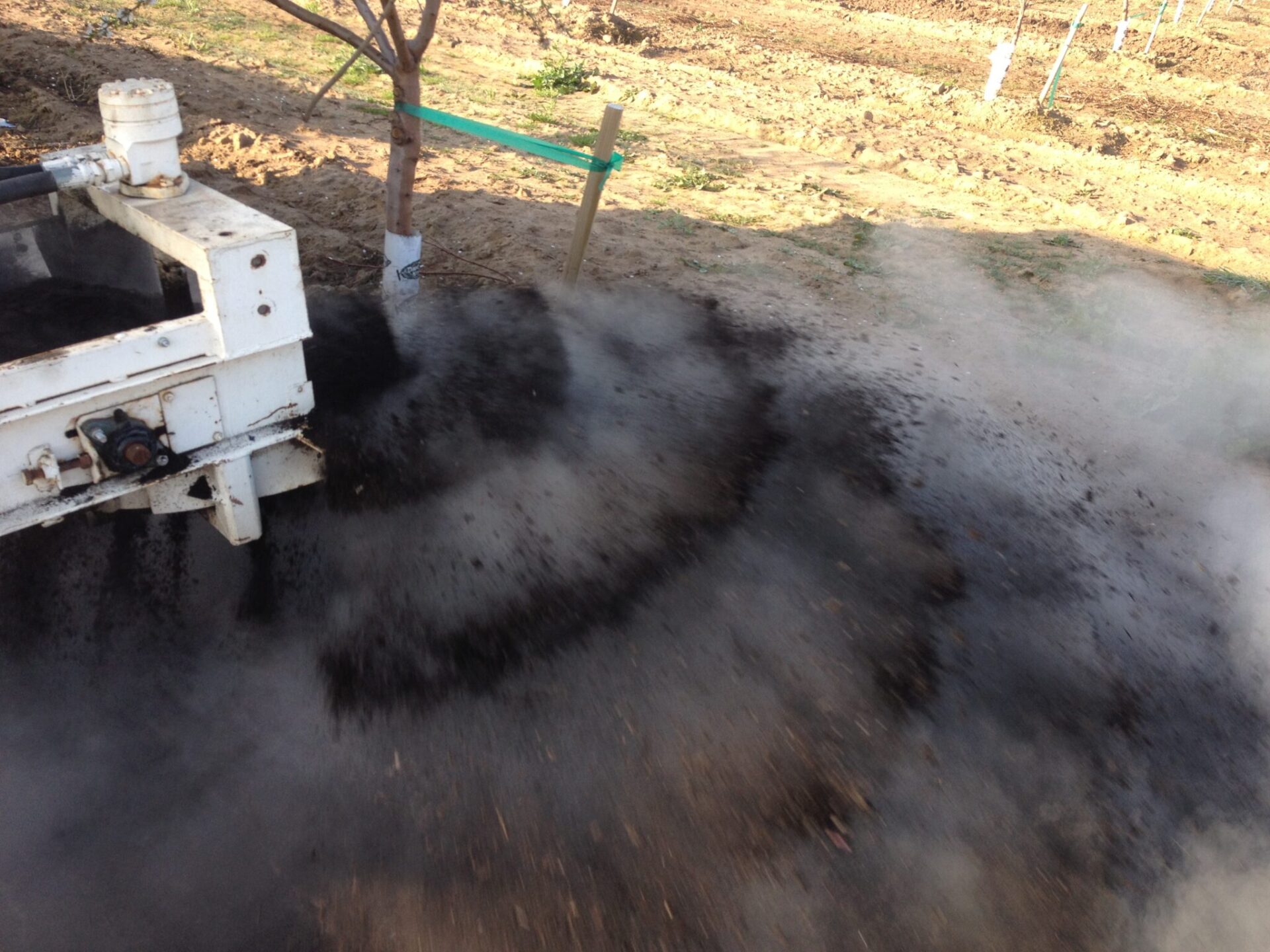
No Significant Differences
After five years of study, neither applications of composted green waste nor composted manure increased almond tree growth or yields, Duncan said. The results were not significantly different among the different amendments or whether grown in excellent, first-generation orchard soil or very sandy second-generation orchard soil.
Stem water potential measurements using a pressure bomb found no significant differences between the trees that received compost and those that did not. The compost treatments also did not reduce pathogenic nematode numbers.
The cost for compost purchase, delivery and application at 10 tons per acre was about $265 annually or $1,325 per acre over the five-year trial. Many growers may only apply five tons per acre, so their expenses would be lower.
Duncan shared some thoughts about why he saw no differences between the compost treatments and the untreated check.
A ton per acre may sound like a lot, but one has to consider that up to 50% of compost is water, he said. In addition, the 3-foot root zone of an acre of soil weighs more than 5,000 tons.
“When you spread a ton of compost out on an acre, it’s just like a little dust on the ground,” Duncan said. “Twenty years ago, I did a broadcast application and the first ton looked almost like I’d not applied anything. I expected more.”
Part of the lack of response also may be that placing the compost on the soil surface did not significantly change soil physical or chemical properties below the top few inches in a no-till orchard system. Finally, our efficient use of fertigation may mask benefits which could be seen in lesser farming systems.
Compost contains roughly 25-30 pounds of nitrogen per ton, so 10 tons contain about 250-300 pounds of nitrogen, he said. Most of the nitrogen is in an organic form that is not readily available during the first season, and some may never be available.
At the same time, growers must account for that nitrogen in their nitrogen management plans under the Irrigated Lands Regulatory Program.
Leaf analyses from July-sampled leaves showed at most a 0.2% increase in nitrogen during some years, with 2.7% N for compost-treated trees and 2.5% N for untreated trees even after several years of applications, Duncan said.
Leaf analysis did show an increase in potassium levels in plots receiving composted manure but not the green waste treatment. As a result, he said, composted manure could replace the need for potash.
Duncan also said that five years may not be long enough to observe the long-term benefits of compost.
“I don’t necessarily want to discourage the use of compost, but it’s expensive and can cost $150 per acre,” he said. “I’m afraid that expectations are too high for some growers. When almond prices are $3 per pound, you don’t have to watch your pennies as much. But in today’s market, $150 per acre is a lot to spend.
“We know that increasing soil organic matter and cation exchange capacity are good goals for growers. It feels like applying compost is a good thing to do. I just haven’t seen any data showing that trees perform better.”
Nevertheless, compost does have a fit in special cases, such as in organic orchards or with soils with surface water penetration issues, Duncan said.










